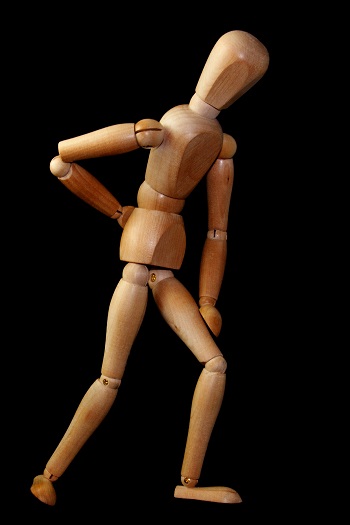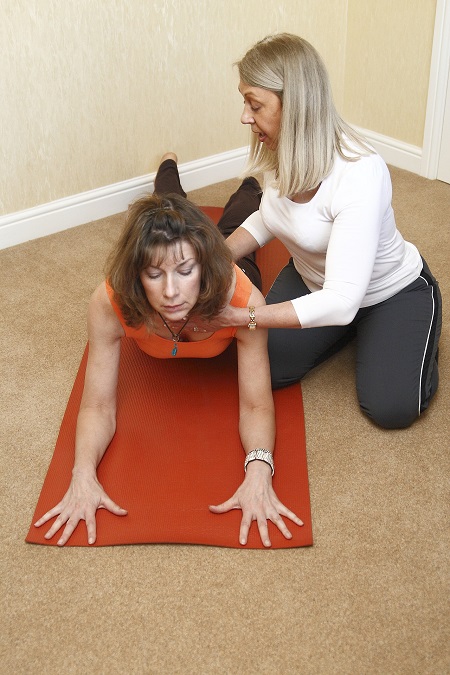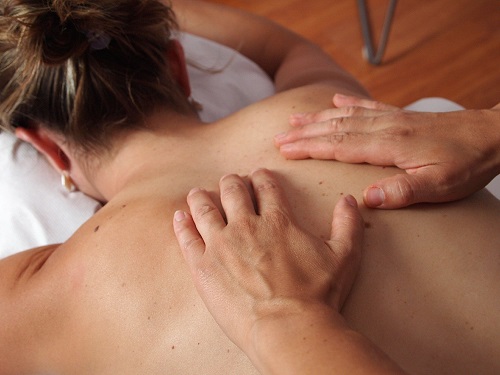Positive Health Online
Your Country

IDD Therapy – A New Way to help Unresolved Back Pain and Sciatica
listed in back pain, originally published in issue 263 - June 2020
When people suffer with back pain or sciatica for a long time, it can feel like having their own personal rain cloud following them around all day, even when the sun is shining. For a long time, physiotherapists have used a variety of mechanical and manual traction techniques to address back pain. However, success was limited and mechanical traction in particular was deemed obsolete.
Over the past ten years, however, a new category of treatment has emerged in the UK which has given physiotherapists a better way to help patients. Intervertebral Differential Dynamics – IDD Therapy spinal decompression enables clinicians to provide non-invasive and non-surgical care for patients who need something more for their pain.

Back Pain & Sciatica
Whilst most back pain and sciatica resolves itself, physiotherapists use a variety of techniques, exercises and behavioural change coaching to help the remainder.
The biggest challenge physiotherapists have historically faced is when pain has lasted for more than three months (chronic pain) and the standard processes for addressing the problem have not brought about the desired change.
Of the chronic conditions physiotherapists struggle with the most is when part of the problem relates to spinal or intervertebral disc issue.
In everyday language people talk of a “slipped discs” though the medical term is either a bulging disc or herniated or prolapsed disc.
A bulging or herniated disc can cause pain in the lower back or neck. They can also cause nerve pain in the arms or legs (sciatica) when a spinal disc presses on or irritates a nerve exiting the spinal column.
Without an adequate method for addressing these unresolved conditions, this left a group of patients stuck and often reliant on pain killers. Some would have spinal injections to try to give some temporary pain relief and a small percentage of patients would go on to have surgery.
This was clearly unsatisfactory.
IDD Therapy Low Back Pain Treatment Video
https://www.youtube.com/watch?v=qcEEJTcy3Sg&feature=emb_logo
IDD Therapy Spinal Decompression
Innovation tends to happen when a certain problem frustrates the minds of people who need to find a solution. In the late 1990s work began in America on addressing the question of how to help unresolved back pain, in particular disc problems.
The answer came in the form of IDD Therapy spinal decompression. This breakthrough treatment applied computer-science and physics to human anatomy to give physical therapists a new tool to decompress and mobilize a targeted spinal segment and therefore address a common obstacle to pain resolution.
When a spinal disc bulges or herniates and causes pain, it can be the result of sudden injury or, more commonly, a build-up of factors over time. Whether from a lack of movement generally or poor posture, the spongy discs which lie between the bones of our spine (vertebrae) can become weaker. At a certain point even a small movement can cause the weakened disc to bulge or herniate.
The body is very good at protecting itself, sometimes too good! When there is an injury in the spine, the body guards itself by triggering the muscles in the back to contract or ‘spasm’; this sends waves of pain through the body, rather like cramp.
Over time, the spinal segments which are supported by muscles and ligaments can become stiff and weak from underuse.
We sometimes think of this like the spine being in a plaster cast. In the same way that when a broken bone is housed in a plaster cast, over time the muscles waste and when the plaster comes off, the joint is very stiff.
The spinal discs rely on movement to stay healthy; this stiffness, weakness and resulting lack of mobility prevents the body from healing and functionally naturally.
So the question of what to do becomes very important.
Advanced Technology
IDD Therapy is delivered by advanced technology in the SPINA machines. A patient lies comfortably on the machine and is connected to it with two harnesses on the chest and pelvis. Then, computer-controlled decompression or pulling forces are applied at precisely measured angles to gently open the space between the vertebrae and take pressure off the affected disc.
The spine and surrounding tissues are still strong, after all they support our whole body weight through the day. In order to gently open the space in the spinal segment, higher pulling forces are applied than was previously comfortable. This is possible because of the control from the computer.
The combination of higher decompression forces and the ability to target treatment to the affected spinal segment means that IDD Therapy has given physiotherapists the means to treat bulging or herniated discs far more effectively than previously possible.
Improving Mobility is Crucial for Health and Healing
Improving mobility in any injured joint is a key goal of physical therapy. With the muscles and ligaments which support the spine, it can be difficult to bring about change using manual-only techniques.
IDD Therapy, however, has a unique capability to gently mobilize the joint through a series of gentle but rhythmic stretches during the treatment. It is barely noticeable to the patient, but this added benefit means that physical therapists can work on the stiffness in the joint and progressively improve mobility.
The reason mobility is so important is because it helps with an exchange of fluids and nutrients for healing. Then as mobility improves, a patient can better carry out daily activities which in turn serve to reinforce the healing process and keep a patient healthy and pain free.
Patients have a course of IDD Therapy spinal decompression which can be for up to 20 sessions. Patients understand that conditions which have built up over time, do not simply get better with a few thirty-minute sessions of physical therapy. This has been recognized; insurance companies like Aviva health insurance now pay for IDD Therapy because of the cost-benefit of this non-invasive treatment over injections and surgery.
A few patients may still need to see a Consultant as certain conditions may be too severe for IDD Therapy to bring about change. However, it is universally accepted that it is always better for patients to avoid invasive treatment if possible, unless injections or surgery are the appropriate treatment paths to take. IDD Therapy is combined with some other therapies including manual therapy and exercise. The goal being to gently strengthen the spine as pain subsides and mobility improves.

The Importance of Exercise for Long Term Pain Relief
When patients hear the word exercise, it often conjures up images of pain and discomfort! We think of army training instructors shouting at us or we get flash backs to PE lessons at school.
Exercise needn’t be exhausting or painful. Physiotherapists prescribe certain exercises for patients because these are essential to maintain the body in good working order. The starting point for many people will be gentle walking each day. This is often more activity than people are used to doing and walking has many benefits for both our physical health and our mental wellbeing.
There are of course specific exercises we work on for long term spinal health. The word ‘core’ is used a lot; people often think the core is the six pack! The word core refers to many muscles, but it includes the abdominal muscles (rectus abdominis), deeper muscles which wrap around our front and sides (transverse abdominis), the muscles on the side of the abdomen (internal and external obliques) as well as muscles in the back (erector spinae muscles).
The core provides stability, posture and supports loads, thus taking pressure off the structures of the spine. A strong core is important but so is all round strength and movement.
What we find is that the more patients can do for themselves, the more the benefits of treatments will last. When people get in to a habit of exercise, rather than the ‘vicious circle’ we tend to think of with pain and immobility, we get on to a ‘virtuous circle’. That is, as we move more, we help our body and as we move more we feel better. As we get used to that feeling we are more likely to continue, because we want to.
Most of the exercises people are given can be done at home and don’t take long. Finding a local exercise group to suit your level can also be a great way to get on to a virtuous circle. It gives us routine and (gentle) accountability.
It is always useful to discuss with a physiotherapist the sort of exercises you should do; one of the main criteria is perhaps to find something you enjoy. If we don’t enjoy something, we are far less likely to persist with it and develop a habit!

Trends in Back Pain and Back Care
Physiotherapists are observing more patients with back pain. As a nation, people are becoming more sedentary and, whilst it can be uncomfortable to say, we are getting heavier. We spend more time sitting at computers or looking at phones and increased amounts of leisure time is spent sitting slouched on the sofa. There is thus an expectation amongst physiotherapists that the incidence of back pain will rise over time.
Spine care has seen many changes. Over the past few years there has been a move away from invasive procedures including surgery and injections. Surgery is given as a last resort for very specific conditions and injections are given less frequently because they do not address the causes of the underlying problem. Injections are intended to give a window of pain relief for other treatments to help the patient.
As knowledge of the body and rehabilitation has grown, so the focus on ‘conservative’ (non-invasive) treatment has increased. The expansion of IDD Therapy spinal decompression is an illustration of our improved understanding of how to maintain good spinal health.
IDD Therapy End Note
There are over a thousand clinics around the world providing IDD Therapy and there is a network of independent clinics in the UK including physiotherapists, osteopaths and chiropractors. People will always suffer with back pain. Back pain can be a vicious circle of pain, lack of movement, unhappiness or even depression as people fail to make progress or lose hope that there are no options.
IDD Therapy gives physical therapists the opportunity to help people get on to a virtuous circle. As pain subsides and mobility and function improve, people are better able to engage in the sort of daily activities which help prevent back pain in the first place.
Further Information
For more details visit www.iddtherapy.co.uk
Comments:
-
No Article Comments available